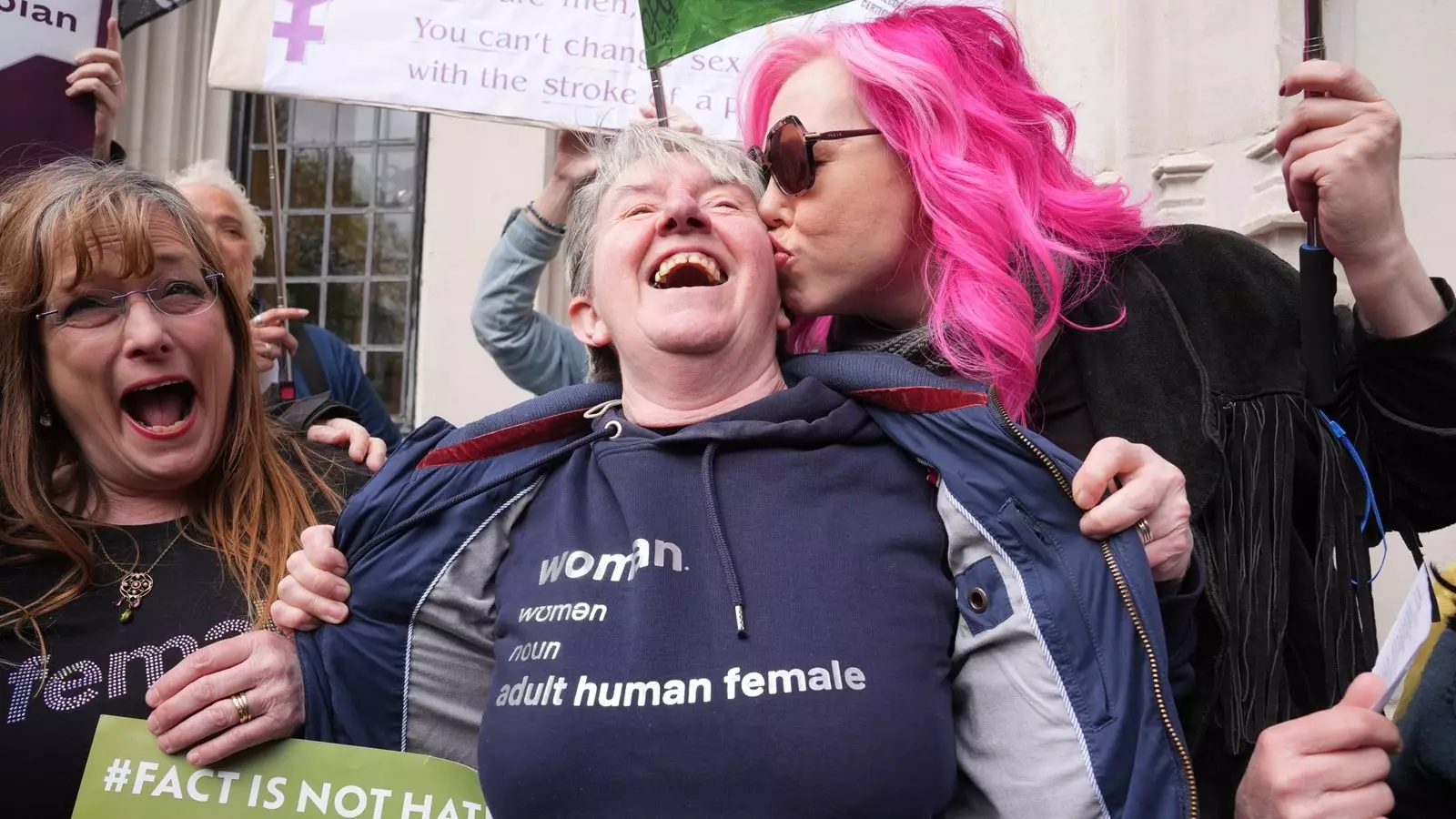For far too long, the discourse surrounding gender and sex has devolved into a cacophony of emotional rhetoric and divisive arguments. The recent ruling by five judges at the highest civil court in the UK has crystallized this ongoing battle, igniting heated debates across England, Scotland, and Wales. Their unanimous consensus—that the legal definition of a woman is essentially tethered to biological sex—has sent ripples through society, affecting countless individuals and reshaping the legal landscape. This decision signifies that those possessing gender recognition certificates are not recognized as women within the legal framework, underlining a disconcerting reality for many trans individuals.
Before delving deeper into the implications of this ruling, it’s essential to unpack the legal framework that surrounds it. The judges focused on two pivotal pieces of legislation: the Equality Act 2010 and the Gender Recognition Act 2004. For two decades, individuals with gender recognition certificates operated under the assumption that their gender change was acknowledged for all legal intents and purposes. The Equality Act, however, cast a shadow of ambiguity, allowing for the exclusion of transgender individuals from women-only spaces under certain conditions. This ruling represents a chilling setback in the fight for gender equality, raising questions about the balance of rights between cisgender women and trans women.
A Mixed Reaction: Division in Society
The aftermath of this landmark ruling has revealed a nation bifurcated by its responses. On one side, campaigners for women’s rights hailed the decision as a pivotal victory, celebrating what they see as newfound clarity regarding access to single-sex spaces such as hospitals and prisons. Emotions surged in Edinburgh as groups gathered to decry the perceived encroachment of trans rights on women’s rights, showcasing an alarming trend where one marginalized group feels obliged to dismiss another’s struggles.
Conversely, the trans community expressed profound disappointment. A trans woman who openly shared her feelings of being “gutted” by the ruling exemplifies the emotional toll this case has wrought. For many in the trans community, this ruling strikes at the very core of their identity, undermining years of battle for recognition and equality. The assertion that trans women are not “women” in the eyes of the law feels like an outright rejection of their existence—an affront to their dignity and humanity. It poses a critical question: can society reconcile the rights of women with those of trans individuals without compromising the integrity of either group?
The Political Ramifications
The political landscape surrounding this ruling is complex and fraught with peril. Politicians from varying parties are scrambling to dictate their stances, with Sir Keir Starmer’s government suggesting the ruling provides “confidence” in maintaining single-sex spaces. John Swinney’s more subdued acceptance reflects a political strategy desperately trying to distance itself from the gender politics that have hampered its predecessors’ effectiveness. This maneuvering raises another significant concern: are political leaders prioritizing pragmatic governance over the lived realities of their constituents?
The fallout from this ruling may very well signal an end to Scotland’s proactive gender reforms, a prevailing contrast to the progressive ideological shift that characterized prior states of governance. As discussions evolve and the political machinery churns, it becomes increasingly evident that this ruling serves not merely as a legal determination but as a political litmus test. With the looming Holyrood elections, the ramifications of the court’s decision could define the trajectory of gender policy for years to come.
Confronting the Future
As society grapples with the implications of this landmark ruling, the pressing question remains: how do we move forward without further alienating already marginalized voices? The court’s decision has sharply delineated the lines between competing rights, leaving many in a vulnerable limbo. In a world striving for equality, this ruling marks a disturbing regression rather than a step toward unifying dialogue.
It’s essential now more than ever to foster an environment where discussions about gender—and human rights, in general—are anchored in empathy rather than division. The task at hand is monumental, requiring careful balancing and the cultivation of understanding between diverse groups. Only then can we hope to navigate the turbulent waters of gender identity, ensuring that no one is left behind in our pursuit of justice and equality. The path ahead is fraught with challenges, and it demands our collective courage to confront and redefine our notions of identity and inclusivity.


Leave a Reply